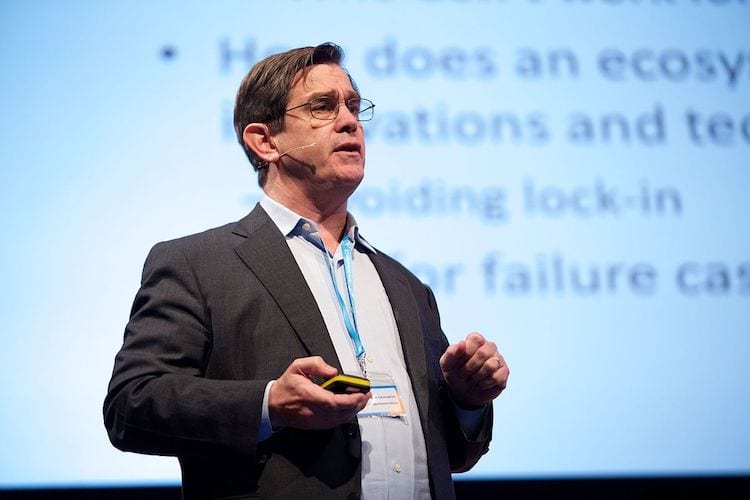
Former Cisco CEO John Chambers and Xiaomi Chief Architect Baoqiu Cui will be among the industry leaders to speak at the fifth annual World Open Innovation Conference (WOIC), which will explore how business leaders can collaborate to digitally transform their organizations.
Speakers at the Dec. 13-14 conference, “Digital Transformation for Sustainability,” include Chambers, chairman emeritus of Cisco and founder and CEO of JC2Ventures; Cui, Xiaomi’s chief architect and vice president of artificial intelligence and cloud platform; Melissa Schilling, professor of management and organization at New York University’s Stern School of Business; and Scott Stern, professor of technological innovation, entrepreneurship, and strategic management at MIT’s Sloan School of Management. The conference will be held at the San Francisco Airport Marriott Waterfront.
Henry Chesbrough, faculty director of the Garwood Center for Corporate Innovation, will welcome the nearly 200 attendees expected this year. The conference is unique in that it unites industry leaders, innovators, and academic experts to discuss open innovation, a concept first defined by Chesbrough. Open innovation acknowledges that not all of the smartest people work internally at your company—and provides strategies to engage with experts worldwide outside of your organization to advance an innovation agenda.
“When we started the conference five years ago, we had no idea how quickly and enthusiastically our open innovation ideas would be embraced by both theorists and practitioners,” Chesbrough said. The open innovation concept has evolved over the years through new research, and has been adopted as a key pillar of European Union Commissioner for Research, Science, and Innovation Carlos Moedas’ agenda for EU innovation policies.
Open innovation applies to digital transformation—the shift of analog processes to digital—because it can be used to help reconstruct how business operates, Chesbrough said. In the analog world, processes were based on a “push” strategy for sharing information on the business’ schedule. In contrast, the digital world enables the on-demand “pull” of the right information to the right people at the right time. Conference attendees will consider how open innovation can solve real-world challenges businesses face when moving from the push to the pull flow of information.
A global focus will be reflected during the conference’s planned Corporate Challenge sessions, featuring companies from the U.S. (Allergan), China (Xiaomi), India (Wipro), Japan (Fujitsu), and Spain (Banco Bilbao Vizcaya Argentaria). Each company will pose a challenge—organizational culture, business model, intellectual property policy, or research-and-development—that will be solved hackathon-style. The challenge matches academics with industry professionals to form teams of approximately eight with an assigned moderator for most teams. The session’s conclusions will be published as white papers.
In addition, the call for academic papers for the conference produced more than 100 submissions. A total of 55 of these papers—all representing new research in the field of open innovation—will be presented at the event. Topics include blockchain, artificial intelligence, business model innovation, product development, digital transformation, ecosystems, platforms, and intellectual property.
Registration for the conference is required.